The first time I played Tekken 3, I was hilariously bad. I was used to 2D fighting games, where the buttons corresponded with attack strength, and tapping ‘Up’ meant ‘Jump’. This new, 3D genre, where each button corresponded with an attacking limb and tapping ‘Up’ meant ‘Sidestep’ (pressing ‘Up’ still meant ‘Jump’), was difficult to wrap my mind around.
At first, I tried playing ‘for real’. I practised my 10 string combos. I scored counter hits from successful dodges. I was learning, albeit slowly and painfully.
I tried mastering Bruce Lee (aka Forrest Law) and Jackie Chan (aka Lei Wulong). But then, I noticed the character in the lower right hand corner of the select screen, with the dreadlocks and the colourful getups. This fighter was Eddy Gordo, and visually, he stood out. Of course, that was the point — the developers wanted new players to pick him — and so, I selected him too.
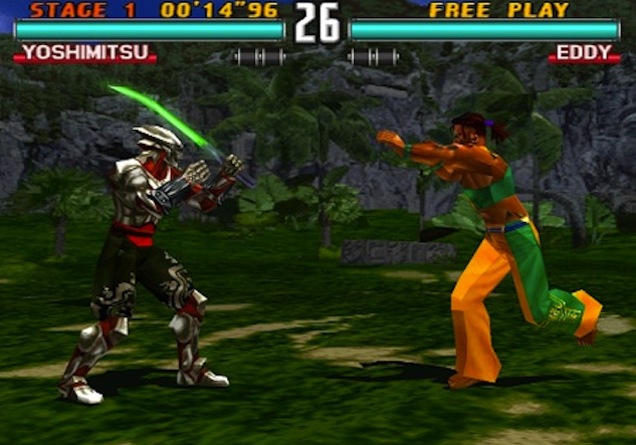
All of the problems I experienced as a novice Tekken player suddenly evaporated. No more stiff movements. No more mistimed combos. No more feeling helpless and weak. This Eddy Gordo guy was smooth. He had Capoeira moves — a mixture of looping kicks, breakdance moves, and flips — that seamlessly strung together. It worked magic on my friends. And now that I have some objective distance, years later, I can see why Eddy seemed so powerful at the time.
The Tekken games set their auto-block to high and mid; they demanded a manual input to block anything low. Eddy, incidentally, loved to hit low. Many of Eddy’s combos were unblockable if the first kick connected. And even if my opponent blocked the entire sequence, the defensive chip damage was considerable. Combine that with his fight animations — which were repetitive, fast, and hard to read — and Eddy was a recipe for newbie destruction.
I didn’t explicitly conceptualize any of this at the time. I was just thrilled to be victorious, damned be the reasons for it. Everyone had to start somewhere, and Eddy was my first in many stepping stones towards Tekken mastery.
But all that could wait, for the time being. I started using Eddy exclusively. I won more matches than I lost. And my friends, suddenly, no longer wanted to play against me.
How was I able to win? I couldn’t duplicate it if I tried. I hammered the two kick buttons as rapidly as I could, and I simultaneously rubbed my left thumb across the bottom of the control pad. It wasn’t a completely mindless process — I waited until my opponent was in range before pounding on the buttons. I knew basic manoeuvring, like how to roll back and sprint forwards. But I won’t gild the lily by claiming any sort of thought out strategy. It was definitely button mashing, but I had never had so much fun.
Anyone who plays video games — particularly fighting games — starts as a novice. Competitive gamers call them scrubs. But the term ‘scrub’ has a negative connotation, and it doesn’t apply to all novice gamers — just those who partake in ‘cheap’ strategies.
What is a ‘cheap’ strategy? Well, some scrubs love to ‘spam’. In nearly every fighting game, there are overpowered moves and combos, whose high effectiveness do not correspond to the difficulty of pulling them off. In Street Fighter games, for example, many novice players learn how to perform Ryu’s Hadouken, and then rely upon it, endlessly, for the entire duration of their matches.
But to be fair, there are different skill levels when it comes to spamming. A more advanced spammer, for example, might vary the speed of the Hadoukens, so that an opponent cannot reliably jump over each one.
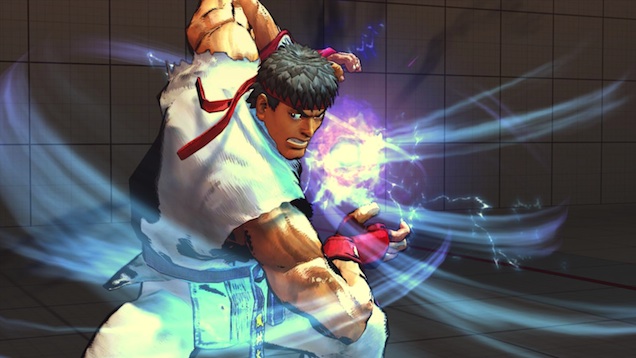
Even amongst pros, a lot of ‘spamming’ goes on. Take, for example, the following match between Daigo Umehara (Ryu) — considered by many to be the greatest Street Fighter player in the world — and Ryan Hart (Sagat):
It may look like a mindless fireball fest to a layman. But the difference is intent. A scrub will throw the Hadouken whenever he or she is able — a competitor like Daigo will use it as a ‘spacing’ strategy, and throw it deliberately, at timed intervals, for the best results. Thus, although spamming is often seen as a ‘scrubby’ tactic, there can be a strategy and intent to it at the highest levels of play.
And then there’s button mashing.
No strategy, no intent — just hitting the buttons, and hoping for the best. And it wouldn’t irritate people so much if it didn’t work. Granted, if I button mashed against a professional, I would get destroyed. But against novice and intermediate players, who probably went into their matches with a basic game plan? I definitely did too much damage, stole too many rounds, and won too many matches for someone who didn’t know what he was doing. And there were always the post-game tantrums — emotional fits that opponents, who weren’t able to consistently block low, would throw at me for being such a ‘noob.’ The irony was not lost on me.
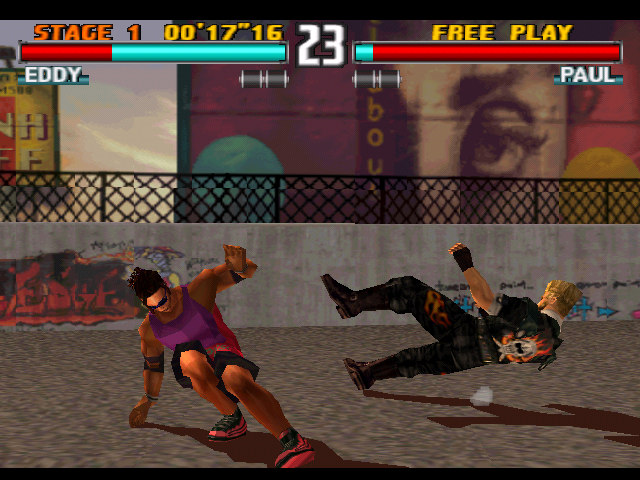
But I loved button mashing for reasons other than schadenfreude. For one, button mashing made me a spectator to my own matches, cheering for myself. It was an out-of-body experience — to ‘play’ a game without truly playing it. I was in suspense, because I had no clue what I was doing, and thus, I had no idea what was going to happen next. Would Eddy do a breakdance? Or do a helicopter handstand? Or do some weird, sparkly flip move that took 80% of my opponent’s health? It was anyone’s guess, and my opponent and I would find out at the same time. It’s the same reason why opponents are so frustrated by button mashers. There’s no counter-strategy against button mashers, because they have no strategy to begin with. Every move is a crapshoot, and every win is a happy accident.
It reminds me of my first button mashing experience, when I was eight years old. I was at a birthday party for one of my classmates, and we all huddled around the Street Fighter II arcade machine, waiting for our turn at the controls. I chose Dhalsim, and at one point, in the middle of the match, my character suddenly reared back. He inhaled deeply, and then exhaled, blowing out a massive plume of fire. My opponent was enveloped in flame, and my classmates and I oohed and aahed.
We had no idea what we had done. But that lucky Yoga Flame sparked our fascination, and none of us could wait to play again. Button mashing may not be the end goal, but it is certainly the entry point for many new players. It can motivate a player to look up the specials, or play around until he or she discovers them again. Learning by doing is the best way to make knowledge stick, and gaming is no exception.
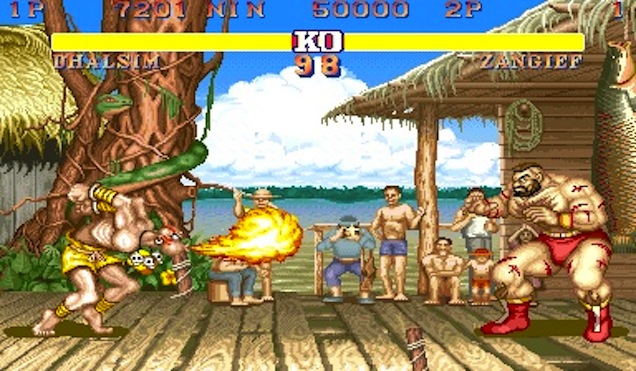
Button mashing also creates a no-lose scenario, and in Tekken 3, Eddy was my Kobayashi Maru. If I won, then I was lucky and relieved. But if I lost, I didn’t care — I was just a dumb novice who had no clue what he was doing anyway. My pride was never on the line. The same couldn’t be said for my friend, who went hoarse from yelling at the TV when he lost to my button-mashing skills.
But eventually, button mashing lost its lustre. Once my friends learned to keep their distance, choose their spots, and block low, I lost more than I won. So, I began reading the Command Lists again. I learned how to sidestep, parry, launch, and combo, consistently. And although it hurt more when I lost, there was a greater, more resonant satisfaction when I won.
Still, no matter how much deeper, more impactful, and better the gameplay became — and no matter how many more Tekken sequels I bought — I never felt the freedom that I did when I was an unrepentant button masher. There was a childish joy to button mashing — a sense of discovery and mystery when everything was so unquantified. And the couple of times that I tried to button mash again, it wasn’t the same. I knew too much, and strategy kept creeping into my head. Like a child art prodigy, who attends art school and loses his gift, I was too self-aware — I had lost the innocence and purity of the thing.
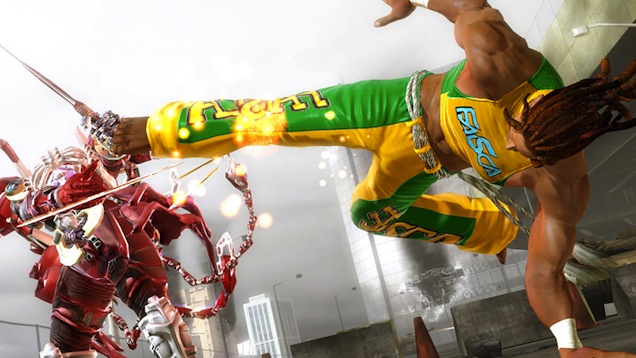
But sometimes, my wife Barbara and I go to the Chinatown Fair arcade on Mott Street — it’s the last of its kind in Manhattan — and they have a Tekken 6 arcade cabinet. I play a few matches — I use Paul or Zafina these days — and Barbara plays too. She’s not really familiar with Tekken, and so the first time she tried playing, I gave her the best advice that I could.
“Choose that guy. That’s who I started with.”
“Eddy? But what do I do? I don’t know any of his moves.”
“Just slam on those two kick buttons, and move the joystick. You’ll get the hang of it.”
Three matches later, Barbara was giggling and snickering in a way that was familiar to me. She finally lost to a guy who used Law, but not before taking two rounds off of him. And the look of anger and frustration on his face? Priceless. He should probably learn to block low.
Art: Sam Woolley
Kevin is an AP English teacher and freelance writer from Queens, NY. His focus is on video games, American pop culture, and Asian American issues. He wrote a weekly column for Complex called “Throwback Thursdays”, which spotlighted video games and trends from previous console generations. Kevin has also been published in VIBE, Salon, PopMatters, and Racialicious, and he will soon be published in Joystiq. You can email him at kevinjameswong@gmail.com, and follow him on Twitter at https://twitter.com/kevinjameswong.
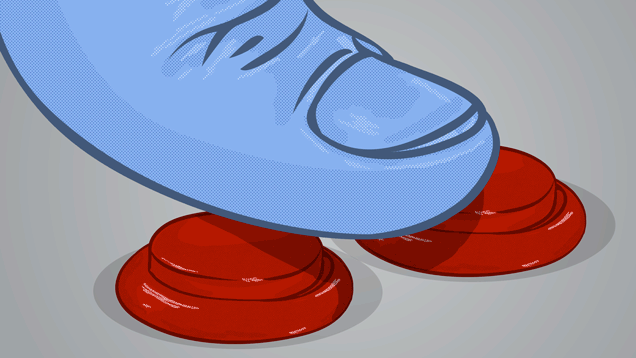
Comments
26 responses to “In Defence Of Button Mashing”
Just try button mashing against me. I dare you. It never works against anyone that actually has an idea of what they are doing.
Not sure if you actually read the whole thing because he addresses this ^^
Great article btw.
I try to play ‘properly’ when I play fighting games but as the health bar decreases, my inclination to button mash increases.
I did read it, but I’m not a pro by any means. It still wouldn’t work.
Oooh look out, we’ve got a badass here.
You know it.
Button mashing is only great in track and field games.
And let’s not forget some QTEs… I’m looking at you The Walking Dead!
Ahh Summer Games sprint and swimming events (and bike riding actually!)
My fingers are still recovering, 20 years later lol
Sydney Olympics 2000 on the PS1, i still have the X and square imprinted on my finger…. Actually it was international track and field that got me wanting a PS1 in the first place…. Any PS4 games that require some good button mashing?
I hate button mashing. Because it never works for me. All I end up with is a character suffering a number of unusual-looking spasms that don’t do anything, before getting my arse handed to me. Whereas my sister on the other hand can mash the buttons and suddenly become the one doing the arse-handing… even when I actually have some idea of what I’m doing :/
Stupid jerks.
Ah, the arcades. I never got into Tekken, I’m more into 2D fighters. If people button mash, it is true that their opponents get really annoyed especially if they lose.
Regarding the spamming or repetition of moves, I have never seen anything more rampant than with Marvel Vs. Capcom 2. All the arcades I go to have people who do the exact same combos for all the characters, except that they have different attack animations. Combo on the ground, try to lift the enemy for an aerial combo, combo on the ground, try to lift the enemy again, then when the power gauge is full, unleash a special move in the middle of a combo. Well, I didn’t play like that, having adopted an SNK fighting style, so what I did was basically run all over the place and hit them randomly. My favorite character was that monkey that rides this Kinton cloud, and the coup de grace that is the final humiliation for my enemies? Turning them to fruit and eating them.
Yeah MvC 2 especially is a bit silly like that, at competitive level the game is played primarily in the air rather than on the ground.
It’s like you see one, you’ve seen them all. It’s just a matter of who’s gonna land a combo first for them.
Okay first off: Marvel vs Capcom 2 is a thing of beauty and elegance. All of the VS games prior to that were basically rushdown and combo games. Depend on who you use, you can play via spam, trapping, chipping, rushdown, keepaway, runaway or a mix of all of these. You could be rewarded by spamming with Cable or Megaman with CapCom assist… but it also rewards you with the more that you learn, and this is why it’s been an awesome game for over a decade. I appreciate that you like being random with SonSon, and don’t let anyone stop you… but when you understand it enough to understand why players do certain things, and how hype some matches get(like a lot of Wong’s stuff)… it’s just amazing. I killed one of my friends who is absolutely awesome at the game with a Raging Dan once(it wouldn’t have been possible if I were a spammer that didn’t understand it)… and he has never forgotten it. =D I bought a Naomi arcade system because MvC2 was that good.
Don’t get me wrong, I love Marvel Vs. Capcom 2 too, it’s just most of the players I’ve seen in the arcades on my homeland play the same way. Like what I did with SonSon, I’m pretty sure there’s a whole lot more to MVC2 and I just haven’t had the opportunity to learn its nuances. Arcades are cheap but they drain your wallet like crazy.
It is cheap to pick up now if get it on Dreamcast(the hard part would be finding a stick) but yeah I agree. I recommend buying UMvC3 if you don’t want to do that… there’s a lot of competition on 360 and PS3 and more ppl tend to play that nowadays than 2.
I do have Ultimate Marvel Vs. Capcom 3, just haven’t played much of it, or my PS3 for that matter. I’ll rectify that as soon as I can, thank you 🙂
For button mashing to work , you need the right character, Eddy is a great example of someone who can look spectacular with a button masher behind the controls, Maxi in Soul Calibur as well comes to mind. Smash bros roster in general, some more than others. Sabrewulf in KI (old KI) too.
Maxi was probably one of the least button masher friendly characters in Soul Calibur. In fact no characters in SC are particularly button masher friendly. But Maxi is one of the worst, because he had a lot of long animations on his attacks and if you were mashing it meant you weren’t actually doing a lot. His moves really needed forethought and precise timing.
Nightmare seemed pretty mash-friendly.
He was my sister’s pick, and she always cleaned up. Even when I’d gotten a solid hold of Raphael in SCII and knew the dodge/counter moves, she’d still usually get me 😛
Nightmare had a few easy combos you could spam but I wouldn’t really say he was button masher friendly. If you knew how to dodge/parry and counter those easy combos you’re most of the way to beating him.
Like most SC characters though, he was a real pain to deal with if you ever faced someone who actually knew how to use him. Nightmare actually had multiple stances (about 6 or 7) that changed up his fighting style significantly, and if you played anyone that knew how to utilise them you’ll definitely be on the receiving end of the pain train.
Love soul calibur, that is all 🙂
.. and nothing has yet beaten the awesome combination of Soul Calibur 2 + the awesome gamecube controller, that analog stick was just made for it I think haha
I’m just impressed by the fact K-Wong got so much copy out of the subject. Gooda jobba.
To me, the words ‘button mashing’ and ‘cheat character’ are forever linked, after screaming that out during hundreds of ‘got next’ fighting game sessions with my bros/cuzzes/homies/posse (or whatever other lame word we used for friends in the 90s/00s).
In contrast to Eddie, the character that seemed to absolutely wrong for button mashing was Dr B. Somehow we managed to unlock him in the game, and button mashing was an exercise in frustration as he repeatedly fell down (and took damage, if I remember right) after a single move. At least it was amusing for everyone not actually using him.
Button mashing loses to anyone who knows how to block and jump (ie, anyone slightly above new player). Although the idea of ‘button mashing’ – which is the basis of ‘mix ups’ in theory – does have merits even at high levels, and aggressive play, which shouldnt be confused with button mashing, is a highly viable strategy.
I read once that there is truth in the phrase “Beginner’s luck” which, as the article alludes to, stems from the fact that a good opponent will expect a beginner to play with the moves and strategies of another competent player. When you start randomly throwing attacks out like you’re having a seizure, the normal counters and strategies won’t work so the other player needs some time to readjust, often giving you a chance to win a couple of rounds.
When I first started with fighters, I was a button masher and dive-kicker. Now that I’ve had a bit more experience and am starting to learn the strategies and psychology required, I rarely jump and tend to be a bit more measured with my attacks. I still have a tendency to panic or get over-zealous and mash out attacks like a politician doing backflips over policy though.
The pictures of Yoshimitsu make me laugh. have you tried button mashing with him? You’ll end up killing yourself before you do any decent damage.
I play as Law in tekken, it’s especially enjoyable to play against a button masher and see their face when I juggle them for half their HP.
I understand the fun of mashing, but it is limited. If you want to play a game where you mash, my recommendation is that you play a game like Hyper Bishi Bashi Champ. That is a game where you are SUPPOSED to mash, and it is IMMENSELY fun. Maybe a music/rhythm game too.
I went through the journey many years ago. I had no idea how to play, and I chose Wolverine in X-Men: Children of the Atom because comic book logic mean that I just needed to get close and slash a few times and I win. That’s not how it worked. I ended up being a fireballer, because it was the most consistent and rewarding way to win as a newbie(vs the computer). Marvel Super Heroes came out, and I started doing short combos and really appreciating the added depth that I didn’t know about, and as the games and years went on, my dexterity and knowledge improved, and pretty soon I was the best there was. Doing combos and being able to legitimately dominate everyone was FUN. Eventually with MvC2, some of my friends got into it, and they got REALLY good, and there was a scene… and what was fun before became immensely fun. Incredibly immensely fun! Occasionally I’d see a button masher who would literally destroy the buttons trying to play the game, and if the buttons were broken, it would ruin the game for the rest of us… so it’s something we’d look down on(for example the MvC2 HP button at Southbank is broken, and you can’t do half of the fun stuff, let alone play competitively). I used to be a newbie though, and spamming crap is STILL a legitimate way of playing… I’d give newbies advice that would help them out to hopefully reward them and help them to appreciate that no matter how much fun they would have normally, it’s more fun to understand and win via that. I’ve been on the journey, I know.
The other thing is that how you play sets a precedent. For a really long time, the VS games had a mashy/scrubby feel to them, when really they were more nuanced. If you see everyone mashing, that might be how you think the game should be played. A good example is Cable in MvC2… when I first played him, I didn’t think he was very good… but then I went to America and despite knowing a lot about the game, I saw how he was really meant to be played, and I brought that back to Australia and paid it forward. I think my advice to anyone is don’t mash; make friends. =)
I remember a taekwondo character in Tekken 3 that had similar button mashing potential, very noob friendly indeed.
I think characters like that are important in the way the Noob Tube is important in COD. It allows players of low skill to have fun while they’re learning, without giving them any sort of outright advantage.
My only problem with Eddy from a design perspective was how hard his moves were to read when I was progressing up to mid-level competency. If my opponent was spamming moves with Eddy, even when I was actively trying to learn to block and get better against him I had a very hard time.
It meant I felt my best strategy against him was to ignore what he was doing and just try to hit him more, which slowed my learning process.
Noob characters are important, but I think he was just a bit too frustrating to learn to play against.
Something else that I wish more fighting games would embrace is easier special moves. I don’t often play fighting games, but was playing the new Mortal Kombat recently and found it frustrating trying to execute moves even when I new what the required inputs were. It meant my challenge was in manipulating the controller not strategising, counter-strategising and timing which I think is where these games shine.
I actually really like Smash Bros for this, you can hand anyone a controller, tell them how to do the moves, and then right away it’s a case of learning when to do things not practicing the joystick movement.
What a lot of new fighting game players don’t seem to understand is that the complicated special moves are more than the artificial learning barrier many assume, but rather an important element in game balancing; generally the more difficult a move is to perform, the more powerful or strategically valuable. There’s also the visual cues it provides an opponent; if you see an enemy bobbing down and forward briefly, that’s your visual cue that a special move might be coming and that you’d need to counter-strategise.
The easiest way of showcasing this principle is with the 3DS version of Super Street Fighter 4, in which special moves can be programmed onto the touchpad as shortcuts. Characters with charge-motion specials (the hold back, then press forward and punch kind) became ridiculously powerful because players no longer had to hold a direction before using that special. Seeing a charge-motion-using opponent walk backwards or crouch was an important visual cue to the player that they were readying a special move; the touchpad shortcuts removed this important aspect of the game, tipping the balance of the game irreparably in the charge-motion characters’ favour.
The fact is, fighting games are a competitive genre, in the sense that you and another player are competing directly with one another. Like any other competitive pursuit, the only way to get better at playing fighting games is to practise, practise, practise. Complaining that special moves are too hard to perform is the fighting games equivalent of complaining that you can’t clear dungeons as a Lv.2 character in an RPG; the only way you’d achieve what you want is by improving yourself.
The game shouldn’t need to reduce itself to the level of its lowest players, the players should raise themselves to the level of the game; that’s a principle I and any other fighting game player should be a big believer in.
I’m very disappointed with the writer of this article.
Button mashing is going to be used by newer players for cheap wins, but the reasons he gives for encouraging it are asinine and antisocial. He has admitted to playing games with an intent to make people as angry as possible, that in itself is a shame. But then he’s boasted that he’s made his friends not want to play a game they enjoy with him. It’s not a big stretch to call that the antithesis of the medium, and it’s even less of a stretch to call it indefensible. For driving people away from a game in this manner, the writer should be ashamed of himself, not proud.
Later on he talks about the joy and “sense of discovery” that comes with button mashing. What exactly are you discovering by button mashing? Sure, you can faceroll one or two buttons and see what attacks come out, but would true discovery not be finding out the exact input needed to perform an attack? Players don’t learn or discover anything through button mashing they couldn’t learn more quickly and deeply by making a determined effort to actually play the game.
It’s pieces like this that demonstrate just how little the wider gaming community gets fighting games, and how disconnected the latter is with the former.